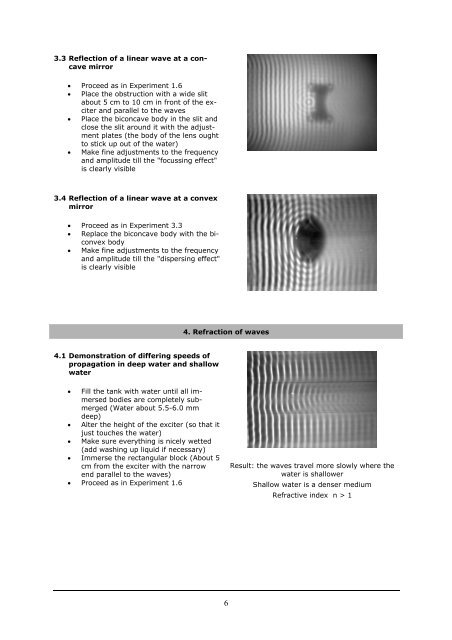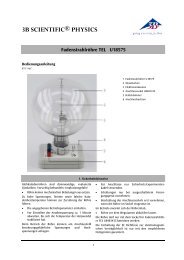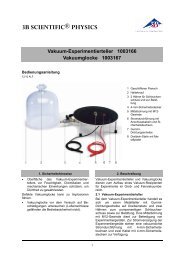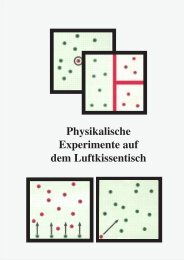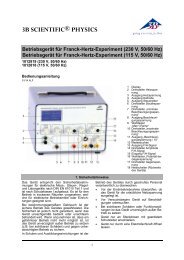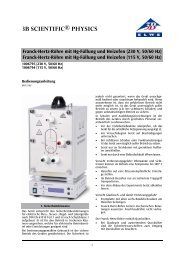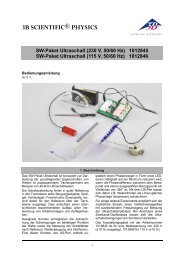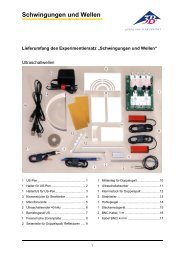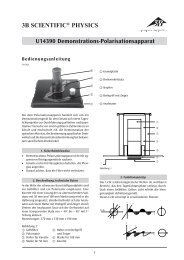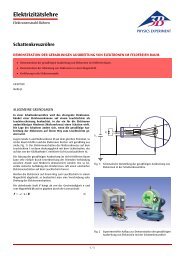3B SCIENTIFIC® PHYSICS Wellenwanne U21910
3B SCIENTIFIC® PHYSICS Wellenwanne U21910
3B SCIENTIFIC® PHYSICS Wellenwanne U21910
You also want an ePaper? Increase the reach of your titles
YUMPU automatically turns print PDFs into web optimized ePapers that Google loves.
3.3 Reflection of a linear wave at a concave<br />
mirror<br />
• Proceed as in Experiment 1.6<br />
• Place the obstruction with a wide slit<br />
about 5 cm to 10 cm in front of the exciter<br />
and parallel to the waves<br />
• Place the biconcave body in the slit and<br />
close the slit around it with the adjustment<br />
plates (the body of the lens ought<br />
to stick up out of the water)<br />
• Make fine adjustments to the frequency<br />
and amplitude till the "focussing effect"<br />
is clearly visible<br />
3.4 Reflection of a linear wave at a convex<br />
mirror<br />
• Proceed as in Experiment 3.3<br />
• Replace the biconcave body with the biconvex<br />
body<br />
• Make fine adjustments to the frequency<br />
and amplitude till the "dispersing effect"<br />
is clearly visible<br />
4. Refraction of waves<br />
4.1 Demonstration of differing speeds of<br />
propagation in deep water and shallow<br />
water<br />
• Fill the tank with water until all immersed<br />
bodies are completely submerged<br />
(Water about 5.5-6.0 mm<br />
deep)<br />
• Alter the height of the exciter (so that it<br />
just touches the water)<br />
• Make sure everything is nicely wetted<br />
(add washing up liquid if necessary)<br />
• Immerse the rectangular block (About 5<br />
cm from the exciter with the narrow<br />
end parallel to the waves)<br />
• Proceed as in Experiment 1.6<br />
Result: the waves travel more slowly where the<br />
water is shallower<br />
Shallow water is a denser medium<br />
Refractive index n > 1<br />
6


